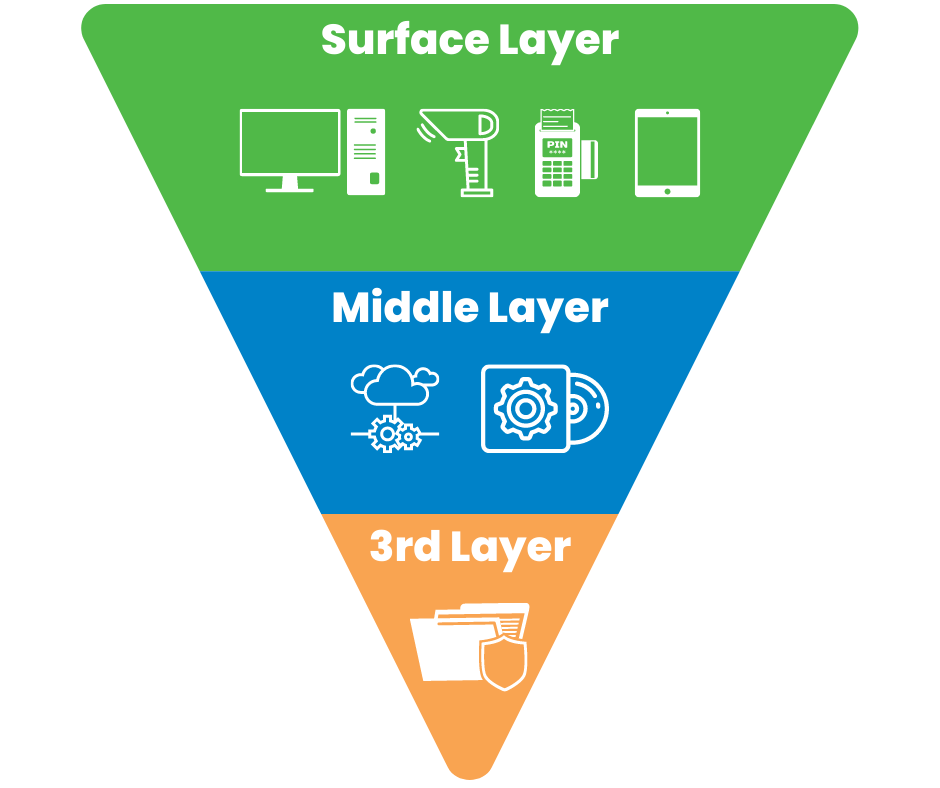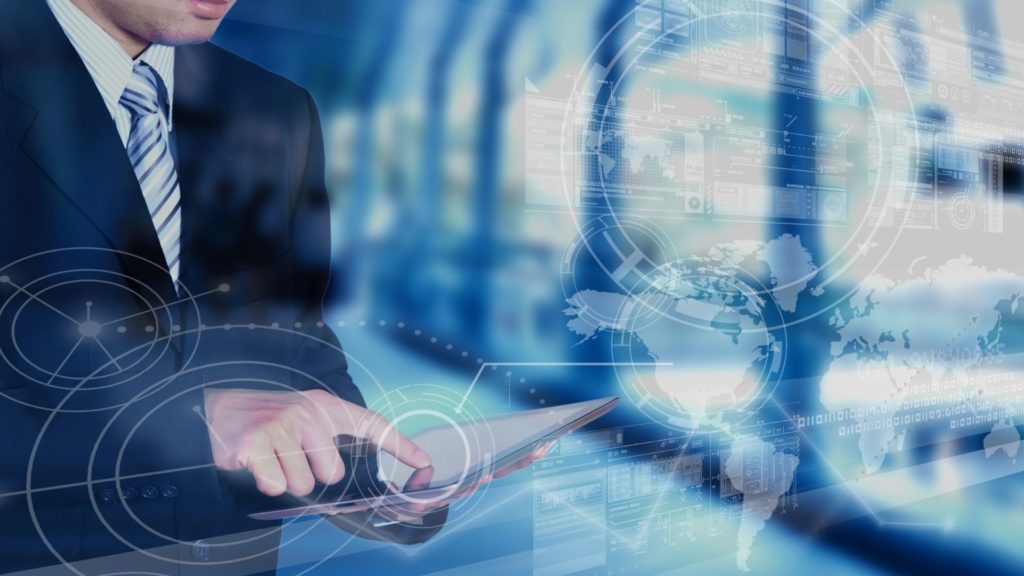There is so much more to retail tech than just what you see on the surface…
When you consider retail technology, the first thing that comes to mind for most people is the surface level hardware – like the screen at the counter at the back of the store that rings up sales. Or maybe some people will go beyond the surface level hardware and the first thing that comes to mind is actually the point of sale (POS) software within that screen that processes the sales and leaves a record of the transaction behind.
Retail technology is actually so much more than that. When it comes to a retail business, the surface level hardware and POS software are just the beginning of a MUCH bigger picture.
When a person deep dives into it, there are dozens of intricately woven layers to retail technology, but we’ve managed to generalize them into three main categories:
1. The Surface Layer
This layer is the obvious one – the one that retailers and consumers alike can see, touch and interact with. Essentially, it encompasses any and all electronic devices you would see around a retail store – like the sales computer that completes the transactions, the receipt printer, the inventory scanners, the transaction pin pads…even the cash drawer that electronically pops open as transactions are completed.
It also includes the surface level hardware that is not so obvious around the retail store – such as the back end computer where the administrative duties are handled, or the server that hosts all of the system requirements to run the data and software programs throughout the store.
Then you have the POS that the retailer and staff use on a daily basis. This is the program that stores a retailers inventory information, transaction histories, customer and staff information…and of course allows a clerk to complete a sale.
The last piece of the surface layer to retail tech is the eCommerce platform – the online store. In today’s retail world, almost every brick-and-mortar retailer has an online store that runs in tandem with their physical location.
2. The Middle Layer
This is where things start to get a little more complicated. The middle layer is home to the programs, integrations and software that are JUST below the surface. These are the things that allow the surface layer technology to function, rendering them essentially useless without this layer in place. For instance, the electronic funds transfer (EFT) link that connects a retailers transaction pin pads to the bank, allowing payments to be received (and refunded) as needed, is crucial to the functionality of the pin pads. How useful is a transaction pin pad without the ability to complete transactions?
Then we have the necessary plug-ins, integrations, and partner software that may be required to assist the POS system in functioning the way a retailer needs it to. There are hundreds of different options out there for all of the different kinds of POS systems, with functions ranging anywhere from customer loyalty programs to digital marketing assistance to specified reporting modules, and beyond!
The middle layer also includes the integration between a retailers’ online platform and physical store(s), which is only required when a retailer is operating with an on-premise POS system as opposed to a cloud-based one. This is the bridge between the stores that keeps inventory information, sales and promotions between all locations up to date and accurate.
3. The Third Layer
AKA: the “background” layer – the systems that are working behind the scenes while a retailer performs their day-to-day business to help drive their business forward.
Like reporting – this is a crucial part of business growth, as a retailer needs to be on top of their data and numbers in order to know the direction of their business. Proper reporting is essential in developing trends which will give retailers insight into whether or not their business plan is working, and adjust as needed to get back on the right track. Reporting comes in a couple different forms – either built-in to a POS system or from an add-on software. Wherever it comes from, it’s working full time in the background, collecting the data a retailer needs to succeed.
And what happens to the data that a retailer collects? Where does it go? Where is it stored? Most, if not all of it, is sensitive business data and a retailer wouldn’t want it accessible to just anyone. And what happens if unforeseeable events, such as a natural disaster or a fire, end up wiping out the hard copy of the data? What if a system virus wipes out the hard drive?
That’s where data back-up comes in – another system working in the background to help drive a retailers success. There are so many different ways to back up data, the options can seem endless. Some options aren’t even fully safe options, as they can end up corrupted or destroyed just as easily as the main data files if you aren’t careful.
To minimize the risk of data loss in the first place, a retailer will also want an antivirus software, which is yet another background system within this third layer of retail tech. This keeps the digital threats away, like viruses and hackers…but not so much the physical ones we mentioned previously.

To a retailer, this may seem like A LOT and may even be deterring you from wanting to run your own retail business if you aren’t as tech savvy as you feel you need to be. This is why Canadian Retail Solutions exists. We are a Retail Operations Partner and as the experts in retail tech, we understand each and every layer there is and how to get a retailer to where they need to be to be fully operational and drive their business forward. All a retailer has to do is tell us what they’re looking for and we will curate the options that will best suit their needs.
You don’t have to be tech savvy to be on board with retail tech when you have a Retail Operations Partner taking care of the details for you.
Remember!! Canadian Retail Solutions exist to make retailers better!

